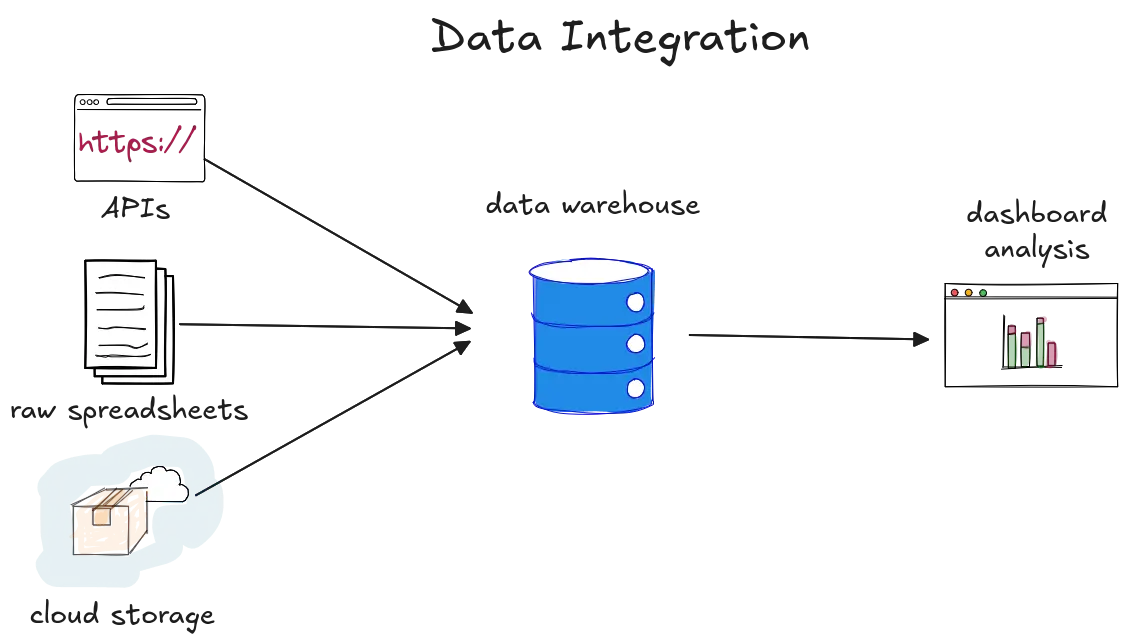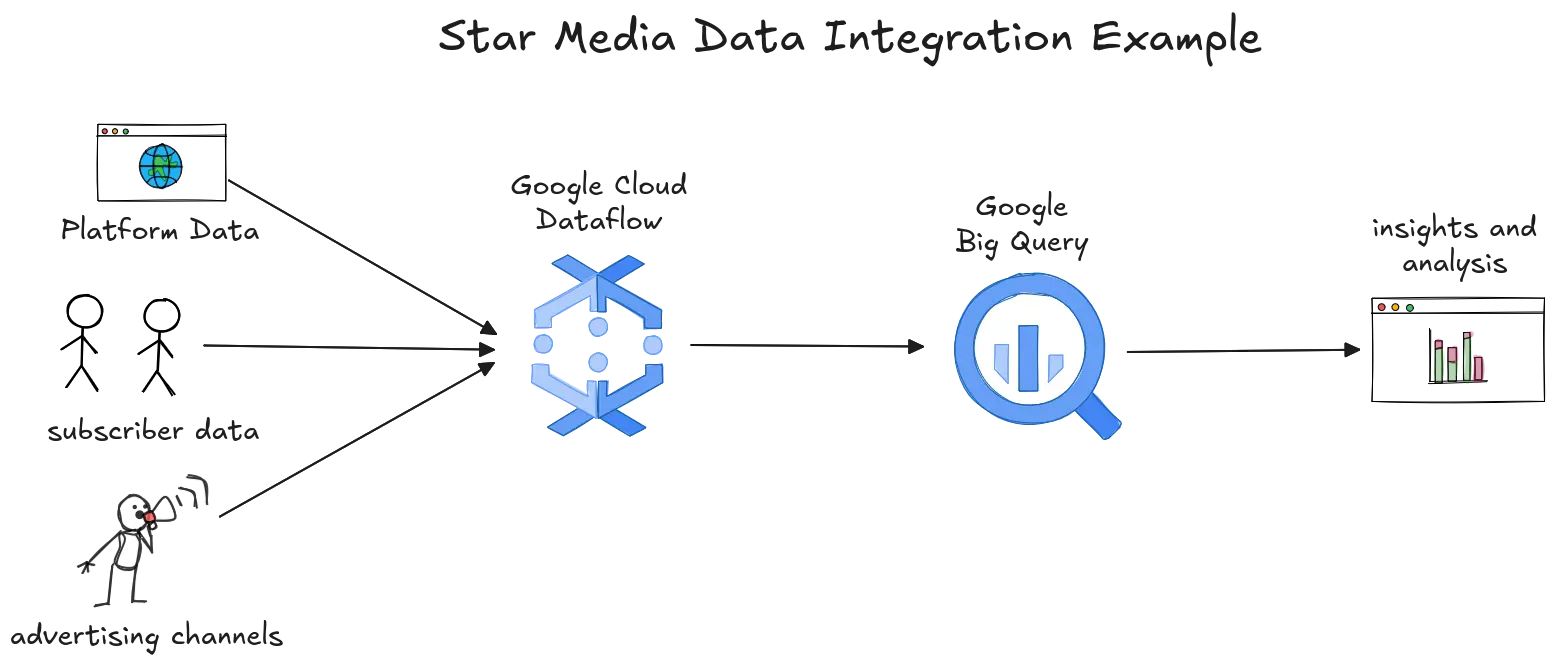Data professionals often struggle with fragmented datasets spread across multiple systems: databases, APIs, cloud services, and real-time streams. This fragmentation leads to inconsistent analyses, slow decision-making, and increased maintenance overhead. Data integration strategies help solve this by combining these sources into a unified view, enabling seamless analysis and operational efficiency. With the rise of big data, effective integration isn’t just a technical necessity—it’s a competitive advantage. According to Gartner, poor data integration costs organizations an average of $12.9 million annually in lost productivity and bad decisions.

Why Data Integration Is Essential
Data integration provides a consolidated foundation for analytics, reporting, and machine learning. Key techniques include:
- ETL (Extract, Transform, Load): Ideal for structured batch processing.
- ELT (Extract, Load, Transform): Suited for modern cloud data warehouses like Snowflake.
- Data Virtualization: Offers real-time access without physically moving data.
Each approach solves different integration challenges. As Forrester Research puts it: “A fit-for-purpose integration strategy can drive operational efficiency and fuel business innovation.”.
Star Media Group Unifies Data for Smarter Insights
Star Media Group, a leading media company in Southeast Asia, faced challenges with fragmented data from multiple sources like digital platforms, subscriber systems, and advertising channels. To overcome this, they implemented a modern data integration strategy using Google Cloud’s BigQuery and Dataflow to create a unified, scalable data warehouse.
This approach enabled Star Media to consolidate diverse data streams into a single platform, allowing real-time analysis and reporting across departments. By integrating their data seamlessly, they improved audience targeting and optimized ad revenue with data-driven campaigns. According to Google Cloud, this integration led to faster data access and empowered their teams to make smarter, timely decisions.
This case highlights how combining cloud-based ETL pipelines and data warehousing can transform complex data landscapes into actionable business intelligence.

Pitfalls to Avoid in Data Integration
While implementing data integration strategies can be transformative, there are pitfalls to watch for:
- Latency issues: Not all use cases require real-time data; forcing it can strain resources unnecessarily. Sometimes, batch processing with ETL/ELT tools like Fivetran or Airbyte is sufficient and more efficient.
- Data inconsistency: Without rigorous validation and proper transformation, integrated data stored in lakes or warehouses such as Google BigQuery or Amazon Redshift can lead to misleading analytics.
- Overcomplicating pipelines: Adding too many steps or tools increases maintenance costs and complexity. Using modeling tools like dbt helps keep transformations clear and manageable.
- Ignoring data governance: Poor metadata management and unclear data lineage reduce trust in the system and make troubleshooting difficult.
Real-time integration is powerful, but always align your method to specific business needs.
Best Practices for Seamless Data Integration
To maximize the benefits of data integration, follow these guidelines:
-
Start with clear objectives: Define the business insights your integration should support.
-
Leverage proven tools for each step:
- ETL/ELT: Use automated connectors like Fivetran or Airbyte to reliably extract and load data.
- Data lakes and warehouses: Store and query your consolidated data in platforms like Google BigQuery or Amazon Redshift.
- Modeling: Use dbt to transform raw data into clean, analytics-ready datasets.
-
Prioritize data quality: Implement regular audits and automated validation checks.
-
Embrace data governance: Establish clear policies for metadata, access control, and data lineage to build trust and transparency.
For a deeper dive, see Fivetran’s resources and best practices.
Future Trends in Data Integration Strategies
The future of data integration strategies will be shaped by automation and AI. Emerging tools are increasingly automating data mapping and transformation. The rise of data fabrics offers unified architectures that simplify integration across hybrid and multi-cloud environments. Additionally, edge computing is processing data closer to its source, cutting latency for IoT and real-time applications.
Gartner predicts that by 2026, 50% of organizations will adopt data fabric architecture to streamline integration across disparate systems. Staying ahead of these trends ensures your data strategy remains scalable and competitive.
FAQ
What are the most effective data integration strategies?
The choice depends on your needs:
- ETL for structured batch jobs
- ELT for cloud-native scalability
- Data Virtualization for real-time insights without data movement
Which tools are best for seamless data integration?
Top picks:
- Apache Kafka: Real-time data streams
- Talend: Comprehensive ETL
- Informatica: Enterprise-grade automation
- Fivetran: Zero-maintenance connectors
How can document management systems support data integration strategies?
Document management systems streamline the organization and storage of unstructured data, such as PDFs, contracts, or reports, which are often critical for analysis. By using a best document management system, businesses can centralize documents, making it easier to extract metadata or content for integration into data pipelines. For example, structured data from documents can be fed into ETL processes or cloud data warehouses like Google BigQuery, enhancing insights from combined sources.
How can influencer marketing reports from Billo be integrated with company KPIs?
Platforms like Billo provide detailed influencer marketing reports with metrics like engagement and conversions, designed for seamless integration with company KPIs such as sales or customer acquisition. Use ETL processes to extract and combine these reports with your existing data in a centralized system for unified analytics and better decision-making. Ensure consistent data formats for reliable insights.
How can contact center software enhance a data integration strategy?
Cloud-based contact center software funnels every customer interaction into one clean, time-stamped stream, making it simple to pipe into your ELT workflows. When you merge that stream with product, CRM, and billing data, you unlock a unified 360° customer view that drives sharper analytics and quicker, data-driven decisions.
How can local SEO improve data integration strategies?
By leveraging local SEO, businesses can gather geographically specific data, which can then be integrated with other data sources to provide more granular insights. For example, a business could use local SEO data to understand how customer behavior varies by region, and then use that information to tailor their products and services to specific markets.
How can LinkedIn CRM data enhance data integration?
CRM platforms optimized for LinkedIn, as explored in Folk's best CRM for LinkedIn, offer lead and engagement data to enrich your analytics. By pairing this with a social media analytics tool it is possible to deepen your understanding of audience interactions. Extract this data via APIs or CSVs and merge it with sales or marketing data in a centralized system to create a unified dataset that sharpens targeting and insights.
How can AI chatbots enhance data integration strategies?
AI-powered chatbot builders like Clepher capture customer interactions from social media messaging, providing a rich source of qualitative and quantitative data. Integrating this data into a central analytics system allows businesses to analyze customer sentiment, identify common questions, and track engagement patterns, enriching the overall customer profile for more targeted marketing and product development.
Unlock Better Insights with Seamless Data Integration
Effective data integration lays the foundation for meaningful analysis and better decisions. Briefer makes it easy to bring your data together and turn it into clear, actionable dashboards. Explore how Briefer can help.
